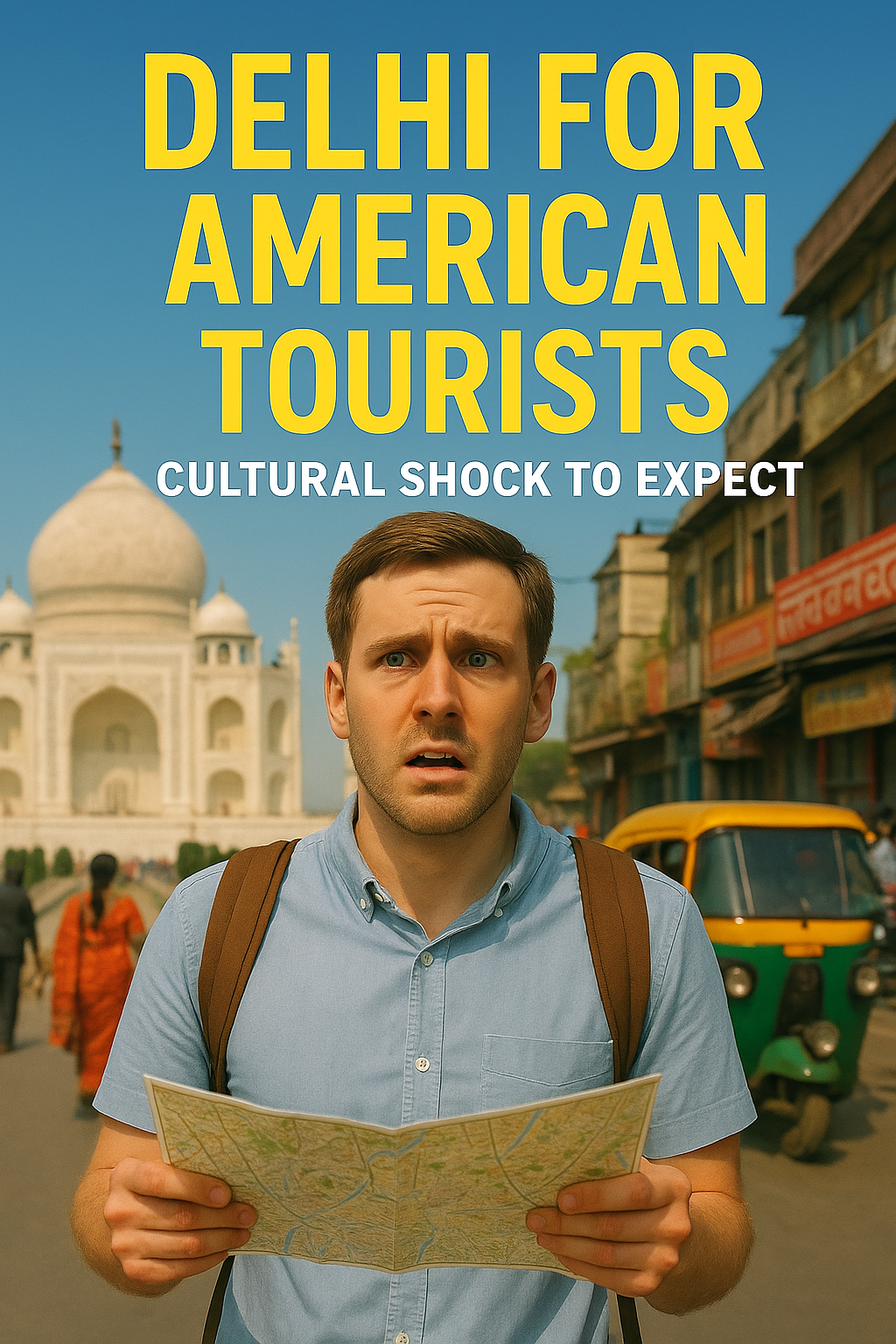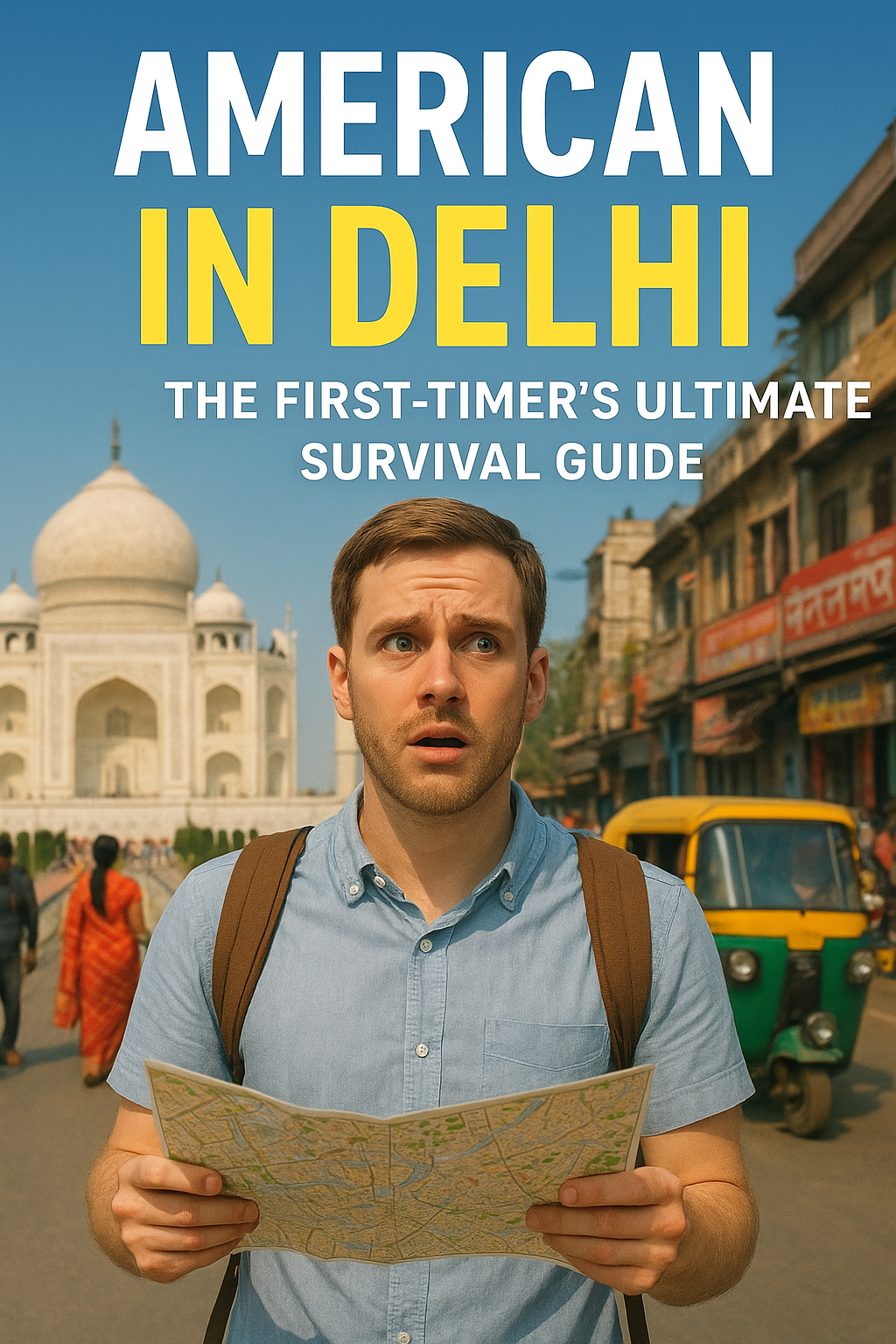So, you’ve booked your flights to India. You’ve seen the pictures of the majestic Taj Mahal and dreamed of the flavorful curries. But what they don’t always show in the brochures is the sheer, vibrant, and unadulterated cultural immersion that awaits you the moment you step out of Delhi’s airport.
For an American tourist, Delhi isn’t just a new city; it’s a new planet. The “culture shock” is real, but it’s also the very thing that makes the journey transformative. Instead of being overwhelmed, here’s a heads-up on what to expect, so you can meet it with curiosity instead of confusion.
1. The Sensory Onslaught: “The Beautiful Chaos”
The Shock: Your first foray into Delhi traffic will recalibrate your understanding of order. The constant, symphonic honking of cars, auto-rickshaws, cows, and motorcycles isn’t a sign of anger, but a language of “I’m here!” and “Coming through!” There are lanes, but they are merely suggestions. The air is thick with the scents of diesel, incense, and sizzling street food.
How to Embrace It: See it as a live performance. Surrender to the flow. As a pedestrian, cross with confidence and a prayer. The key is to observe and move predictably. This organized chaos has its own rhythm; once you stop fighting it, you start to see its strange logic.
2. The Social Landscape: Personal Space is a Western Concept
The Shock: Forget the two-arm’s-length personal bubble you’re used to. In crowded markets, metro stations, or even queues, you will be close to people. You might be touched, jostled, or find someone standing much closer than you’d expect. Staring is also common; as a foreigner, you are a subject of curiosity, not malice.
How to Embrace It: Don’t take it personally. It’s not aggression, just a different norm of proximity in a densely populated country. A smile in return to a stare often breaks the ice. For queues, a firm but polite “line, please?” can sometimes work, but patience is your ultimate virtue.
3. The Non-Verbal Communication: The Head Wobble
The Shock: You will see it everywhere: a side-to-side head wobble that looks like a cross between a “no” and a “maybe.” For Americans, this can be utterly confusing. What does it mean? The answer is: everything. It can mean “Yes,” “Okay,” “I understand,” “Hello,” or “I’m listening.”
How to Embrace It: Consider it the Swiss Army knife of Indian gestures. Context is key. If you ask, “Is this the way to the metro?” and you get a wobble, it’s a “yes.” Embrace its ambiguity and try it yourself—it’s surprisingly fun.
4. The Pace of Life & “Indian Standard Time”
The Shock: While corporate and hospitality India runs on clockwork, in many other interactions, things can move at a different, more fluid pace. Bureaucracy can be slow, chai breaks are sacred, and a simple transaction might involve a long, friendly chat. The American “time is money” ethos meets the Indian “everything in its own time” philosophy.
How to Embrace It: Build buffer time into your schedule. If you have one thing to do, it might take 30 minutes. If you have ten things to do, it will also take all day. Use the waiting time to people-watch, one of Delhi’s greatest free activities.
5. The Stark Contrasts: A City of Duality
The Shock: You will see a gleaming, high-tech skyscraper standing next to a centuries-old crumbling monument. A luxury car will stop to let a wandering cow pass. You’ll see immense wealth and heart-wrenching poverty within the same city block. This juxtaposition can be emotionally challenging.
How to Embrace It: This is the reality of a ancient city racing into the future. Acknowledge it with respect and compassion. It’s okay to feel uncomfortable; it’s a sign of your awareness. Let it be a part of your understanding of the city’s complex story.
Your Mindset is Your Greatest Asset
The initial shock will wear off, usually within a day or two. The key is to approach everything not as a problem to be solved, but as a difference to be experienced.
- Replace Judgment with Curiosity: Instead of “This is crazy,” ask “Why is it this way?”
- Patience is Not a Virtue, It’s a Necessity: Your blood pressure will thank you.
- A Sense of Humor is Your Best Travel Insurance: Things will go “wrong.” Laugh about it.
Delhi doesn’t reward the tourist who just checks off sights. It rewards the traveler who is willing to be shifted, changed, and yes, a little shocked. It’s in this beautiful, chaotic, and profound disorientation that you’ll find the real magic of India.
Disclaimer: This article is based on general observations and experiences and is intended for informational purposes only. Cultural experiences are subjective and can vary greatly from person to person. The author and publisher are not responsible for any individual’s travel experience or interpretation of cultural norms. Travelers are advised to conduct their own research and exercise their own judgment while traveling.




